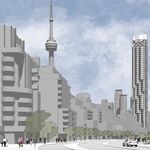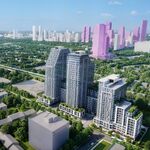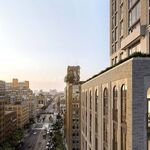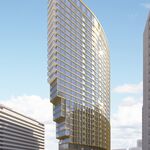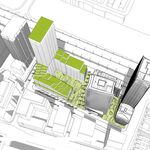By now, the dust has settled enough to show Toronto's infamous 'Hooker Harvey's' still standing. This week saw the long infamous—and lately famous—burger restaurant come under the spotlight as news of a proposed redevelopment set off a wave of reactions across social media, starting with the UT Forum. After a development application for the northwest corner of Jarvis and Gerrard was posted on our Forum on December 30th, an animated discussion about change and gentrification ensued. Is it a place worth lamenting? What would a new tower mean for the neighbourhood? Is the change good?
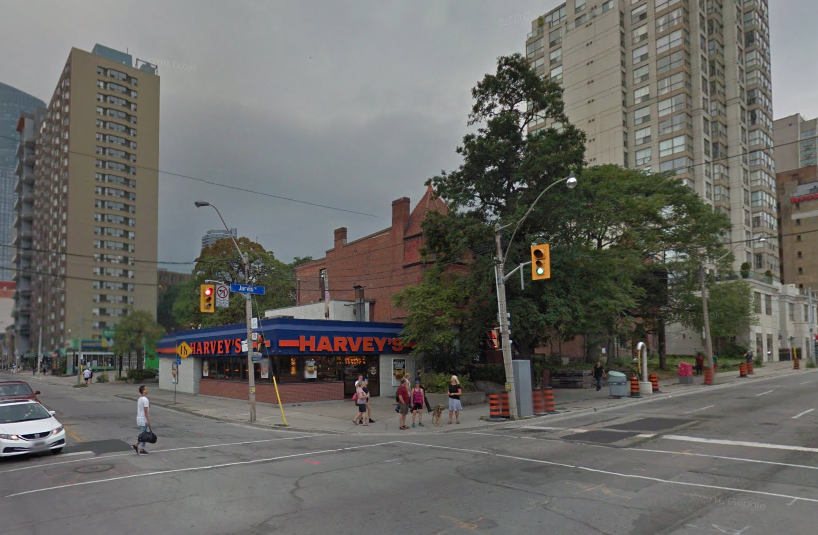 Looking northwest from Jarvis and Gerrard, image via Google Maps
Looking northwest from Jarvis and Gerrard, image via Google Maps
By the time the details of the application came through, however, it was clear that the site would not include the restaurant. Instead, the proposed development effectively wraps around the burger joint, leaving the Harvey's site intact. Led by Antorisa Investments Ltd., the Gianonne Petricone-designed project at 280 Jarvis Street would transform an irregularly shaped 0.339 hectare site surrounding the restaurant.
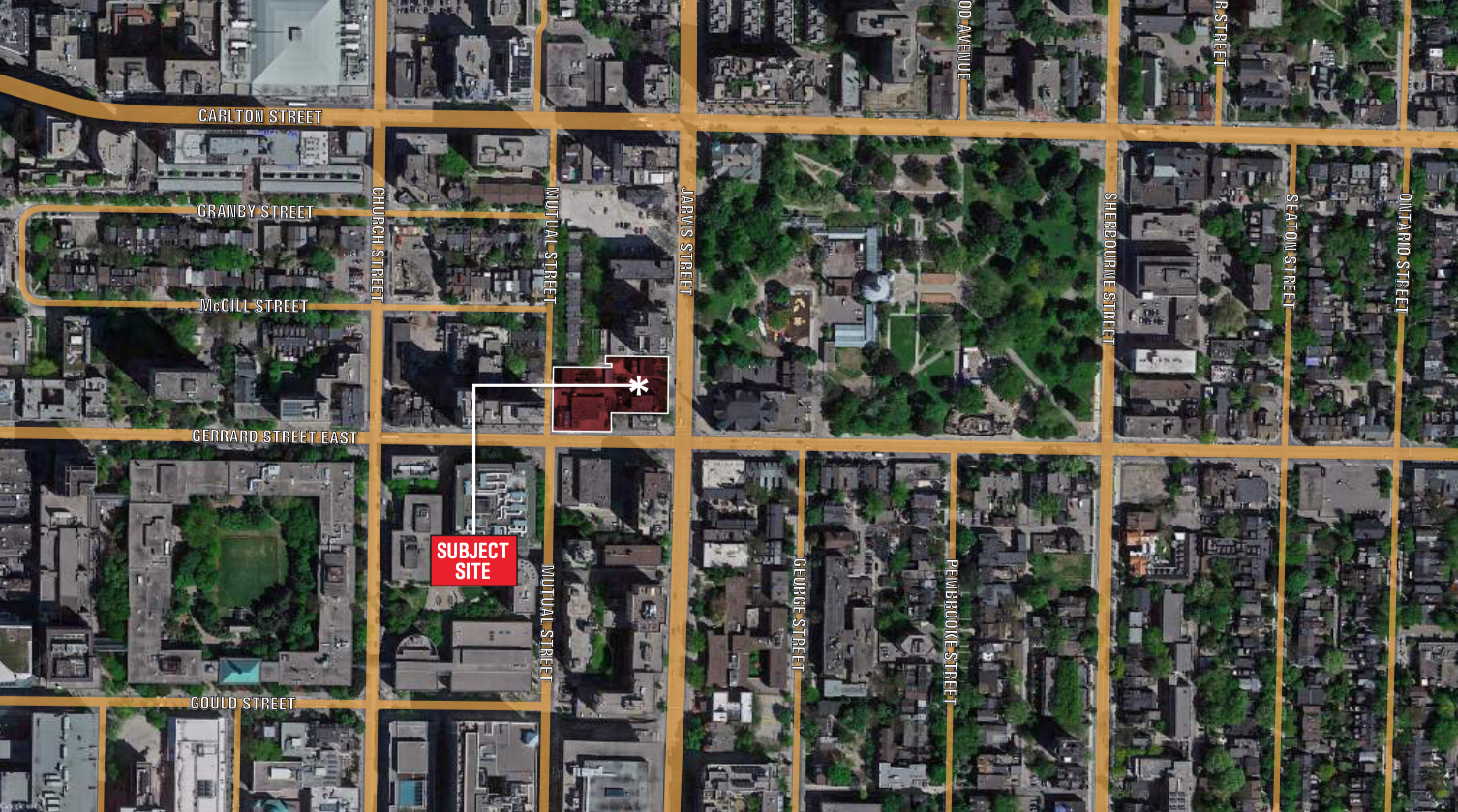 The site, image via submission to the City of Toronto
The site, image via submission to the City of Toronto
With a 25-storey tower fronting Mutual Street and a 10-storey base building on Jarvis, the project calls for a total of 306 residential suites, along with two retail units and office space. Featuring 298 new condominiums, the redevelopment plan also includes eight rental units, which are earmarked to replace the site's existing housing stock.
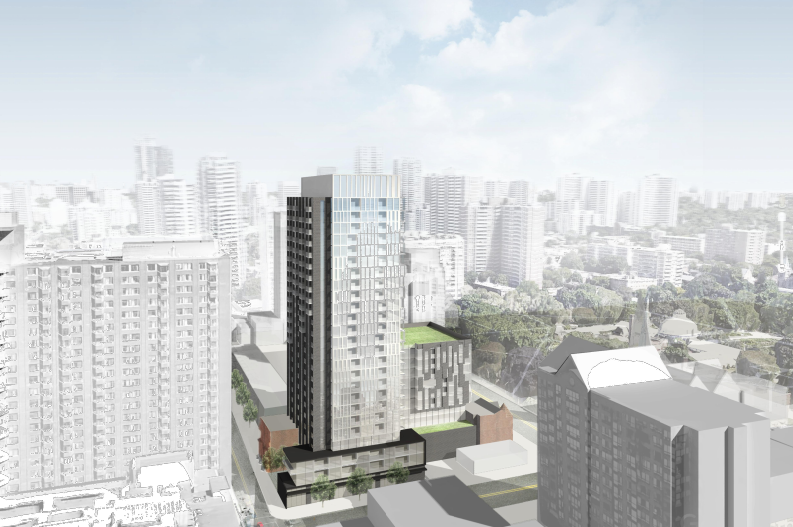 The proposed development, looking northeast, image via submission to the City of Toronto
The proposed development, looking northeast, image via submission to the City of Toronto
On Gerrard, the Active Green + Ross automotive garage would be demolished and replaced with a street-level retail space, while the heritage homes on Jarvis and Mutual would be repurposed and moved to front the new development. On Mutual, the trio of heritage-designated Bay and Gable townhouses (built in 1887) is set to be relocated 7 metres south, with the restored buildings—which are currently divided into six residential units—slated to be reconfigured as three townhome suites.
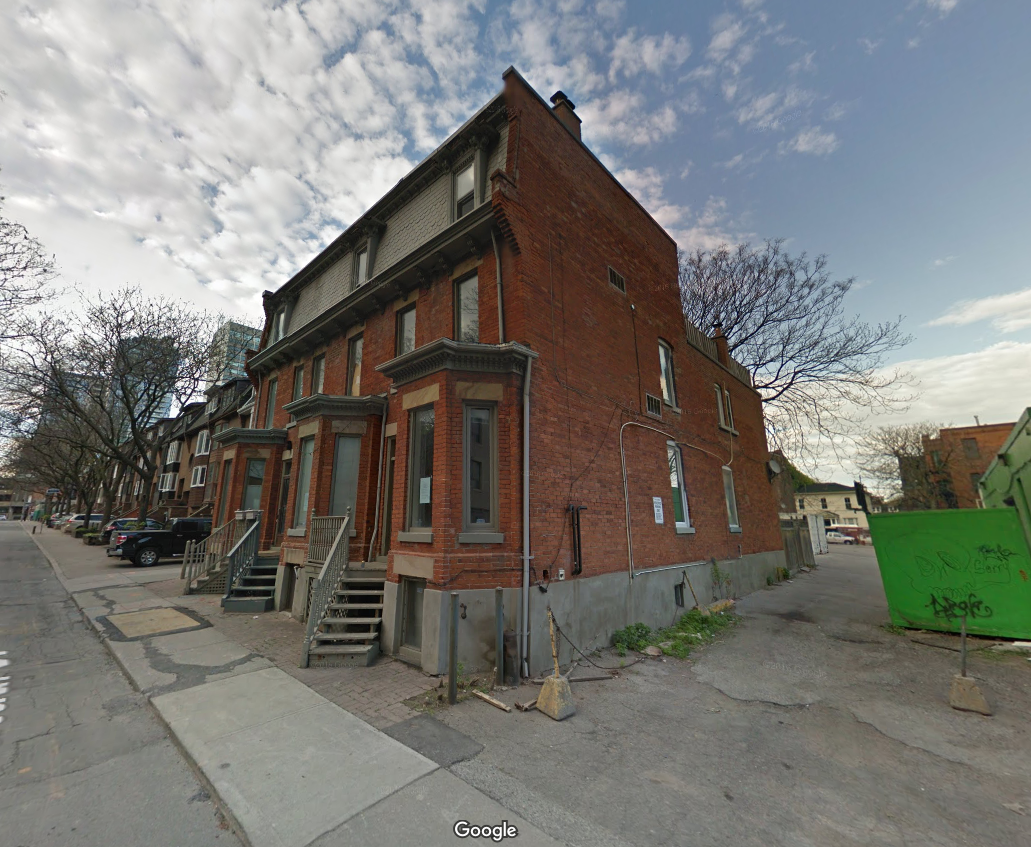 The heritage-designated Mutual Street property, image via Google Maps
The heritage-designated Mutual Street property, image via Google Maps
North of Harvey's, the twin heritage-listed properties at 280 and 290 Jarvis are currently mostly vacant. While the buildings are among the few remaining 'grand houses' that once lined Jarvis, the rental residential units and ground-floor commercial spaces—which once housed offices for a youth program—are now mostly empty, with only a single office tenant remaining at 280 Jarvis.
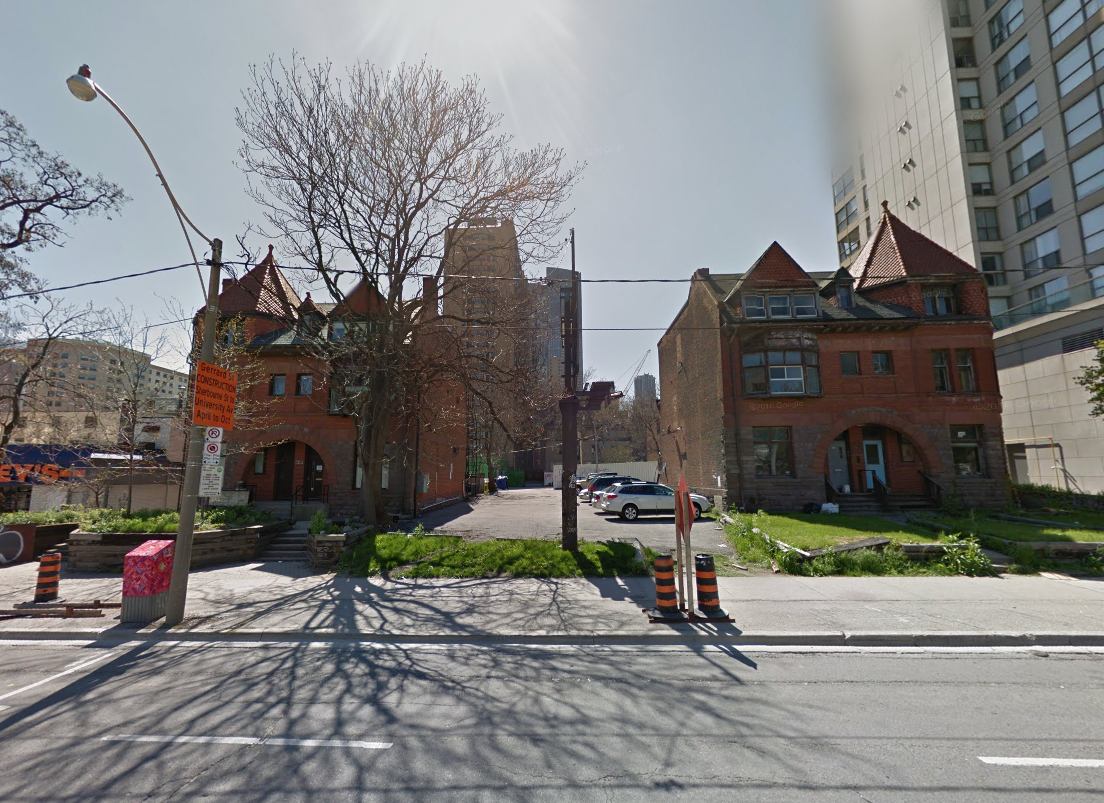 280 and 290 Jarvis (l-r), image via Google Maps
280 and 290 Jarvis (l-r), image via Google Maps
The redevelopment would see the buildings moved 4.5 metres east, meeting the Jarvis sidewalk. Housing a pair of retail units on either side of a commercial lobby, the repurposed properties would flank the primary entrance for the 1,774 m² of office space—occupying the second and third floors of the new building.
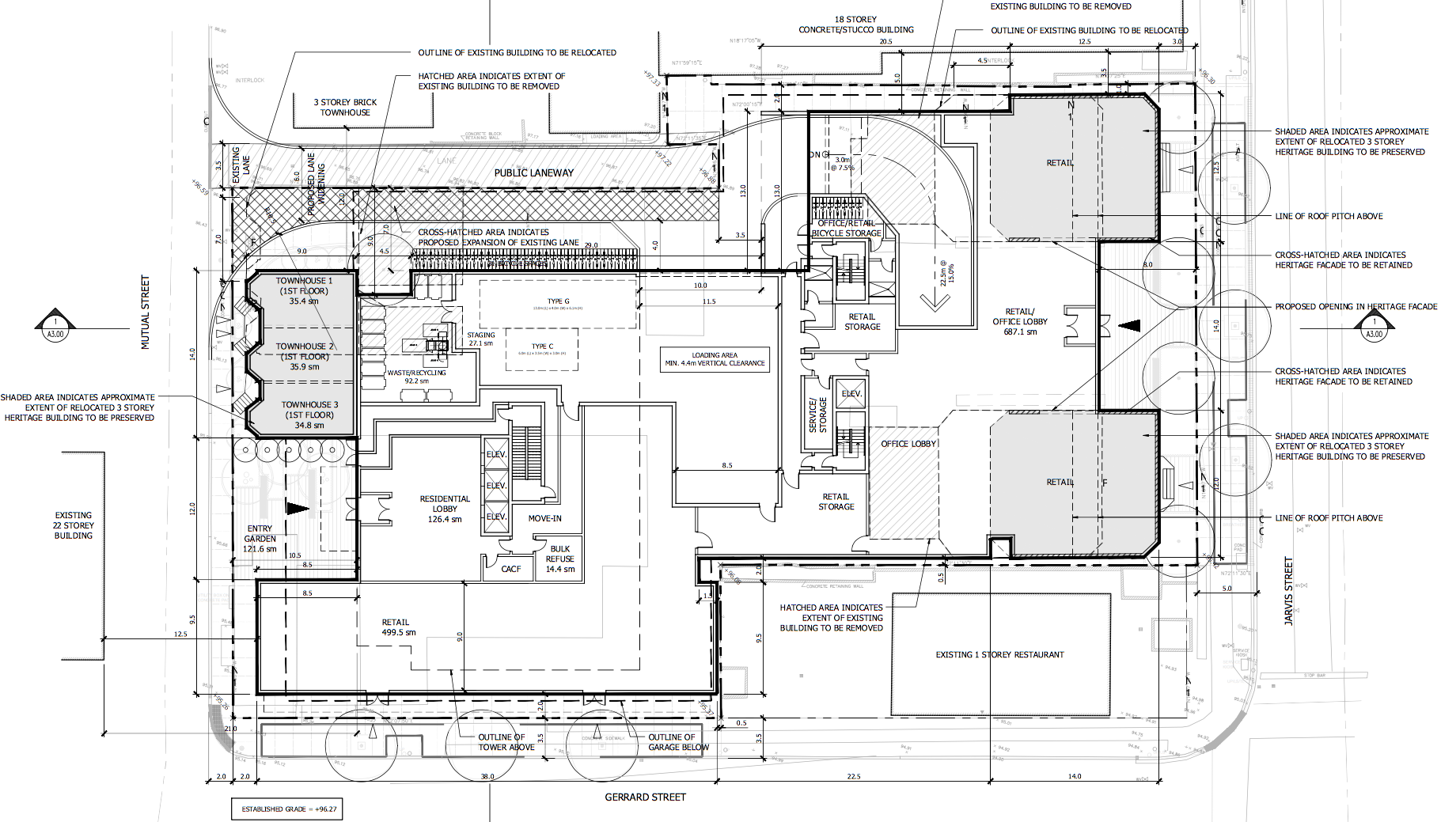 The ground floor plan, click for a closer view, image via submission to the City of Toronto
The ground floor plan, click for a closer view, image via submission to the City of Toronto
295 condos would occupy the upper levels with a unit mix of one bachelor, 236 one-bedroom, and 66 two-bedroom suites. Meanwhile, the three townhomes fronting Mutual would be reconfigured as a trio of as three-bedroom homes. Below grade, a three-level parking garage is slated to have 106 vehicle spaces, 69 of which would be set aside for residents (an urban ratio of 0.22 per unit), with the remaining 37 spots given over to office, retail, and visitor uses. Vehicle and loading access would be provided via an expanded laneway north of the relocated Mutual Street heritage homes.
***
For all the proposed changes, however, the northwest corner of Gerrard and Jarvis would continue to dish out burgers and fries. But in the wake of all the rumination about change and gentrification, it leaves behind a strange, unsettled taste. After all, if demolishing the restaurant meant change and evolution—whether good or bad—does keeping it standing mean something entirely different?
A walk down Jarvis Street suggests it does't. As Marcus Gee pointed out in the Globe & Mail, "[t]he days when Jarvis Street was a busy “stroll” where cars would pull up to the curb at night to negotiate terms with skimpily dressed women are mostly past." "In a sense... Hooker Harvey's is already gone," he wrote.
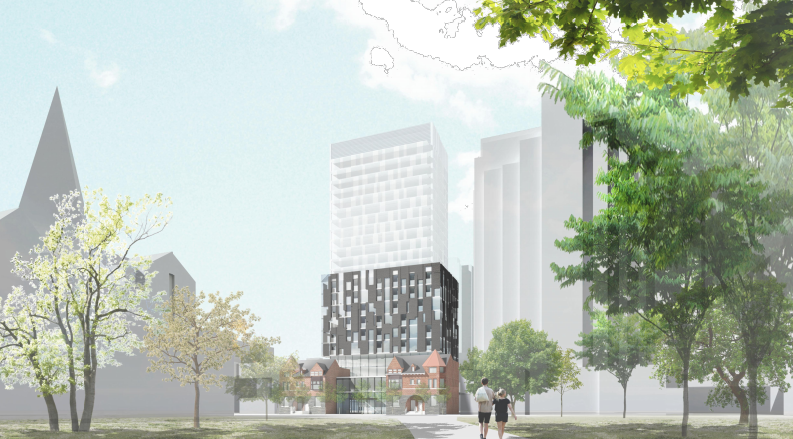 The proposed development, looking west, image via submission to the City of Toronto
The proposed development, looking west, image via submission to the City of Toronto
From Honest Ed's to Galleria Mall to the World's Biggest Bookstore, the commercial landmarks of a bygone era deserve to be celebrated. Whether or not—or to what extent—Hooker Harvey's deserves to be among them is questionable, but its status as a symbol of the past is firmly cemented. Nonetheless, whether it remains or eventually gets demolished probably won't determine the course of the neighbourhood or steer the current of change. Comforting as it can be to celebrate the relics of Toronto's past, believing them to be bulwarks against the future is at least partially misguided.
In a city growing as rapidly as Toronto, it's tempting—and sometimes almost justified—to equate the process of demolition and redevelopment with evolution itself. But change also happens in more subtle ways. Blocks, neighbourhoods, and cities evolve with and without new condos, and joints like Hooker Harvey's change even when they look the same. That doesn't mean new development is inherently good or bad, of course. For Harvey's, though, it means that while the place can continue to be an endearingly graceless landmark, it can't be a time machine.
***
We will keep you updated as more information about the development—and the future of the block—becomes available. Until then, you can learn more by checking out our associated dataBase file, linked below. Want to share your thoughts? Leave a comment in the space on this page, or join the ongoing conversation in our dedicated Forum thread.
| Related Companies: | Bousfields, Civica Infrastructure Inc, Counterpoint Engineering, Egis, Giannone Petricone Associates, o2 Planning and Design |

 3.4K
3.4K 






















